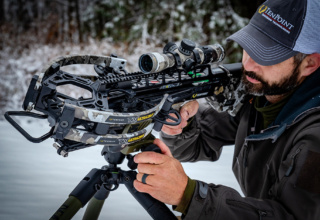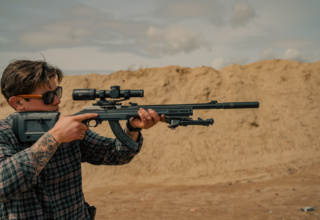The long wait is over. Nine or ten months of waiting, anticipating, planting, scouting and preparing is coming to an end. All across the United States whitetail fanatics are excited at the opening of archery deer season.
Let’s take a look back at some of the preparation that should take place prior to the opening each autumn.
It begins with off season practice. Like far too many bow hunters out there, for years, I sat my bow down in January and never picked it up again until around August or September. I would bring it out a few times, shoot a dozen or so arrows and call it good. But after some time, I noticed that far too often I was missing deer, making poor shots and misjudging yardages. I had to find a way to improve my odds. After putting so much work in scouting, hanging stands, trimming shooting lanes etc. I needed to close the deal by making a good shot. Why was I allowing the most important part to be the least prepared?

I vowed to shoot my bow at least weekly during the entire off season to see if that would help. The difference was amazing. Not only were my muscles in better shape, so too was my confidence. My ability to judge yardages increased and the proof was more lethal shots on deer.
Then I began to look at my equipment. No longer was I settling for equipment from the big box stores, I wanted the best sights, rest and arrow I could find and afford. This pursuit led me down several avenues. And it can get very complex with this scenario so to keep it simple let’s look first at the most important part of the equipment. The arrow.
I have heard turkey hunters say, “The shell is the most important part of the game. If you can’t kill the turkey when you call him in, you are wasting your time.” Archers are increasingly saying things like, “Top of the line bows cannot make cheap arrows hit consistently. Get the best arrows you can afford, it is the most important part of the equation.” As mentioned above, I shot cheap arrows for decades justifying to myself that I couldn’t afford the good arrows. Then I was able to shoot some Easton Full Metal Jacket arrows. The consistency, accuracy and confidence was off the charts. I took them to the competition field where I shoot target archery as a member of USA Archery. My shot scores saw an increase of almost ten points per round by shooting good, high quality arrows. When it comes to selecting a good arrow there are a lot of things to consider. Straightness, strength, and reliability are top of my list. Easton FMJ arrows meet all of this criteria. Providing a great combination of technology and performance. With a high performance Carbon core wrapped with a strong 7075 aluminum. This combination is straight, strong and reliable. It will withstand years of abuse and still hit where you are aiming.
 The small diameter of the arrow allows for less wind drift in harsh conditions and greater penetration by reducing drag through the wound channel. When using a quality and sharp broadhead like the New Archery Products Double Cross, the arrow is pushing it with more kinetic energy allowing the broadhead to do what it was designed to do, deliver devastating wound channels to provide for a quick, humane kill. The FMJ comes in three distinct diameters for an array of options, the 4mm, 5mm and 6mm respectfully are designed for different applications. The 5mm is a good option for hunting different varieties of game from the diminutive southern whitetail to the biggest moose. It can do it all.
The small diameter of the arrow allows for less wind drift in harsh conditions and greater penetration by reducing drag through the wound channel. When using a quality and sharp broadhead like the New Archery Products Double Cross, the arrow is pushing it with more kinetic energy allowing the broadhead to do what it was designed to do, deliver devastating wound channels to provide for a quick, humane kill. The FMJ comes in three distinct diameters for an array of options, the 4mm, 5mm and 6mm respectfully are designed for different applications. The 5mm is a good option for hunting different varieties of game from the diminutive southern whitetail to the biggest moose. It can do it all.
Practicing weekly and then moving to practicing daily enables hunters to make quick range estimates, and kill shots on game. When practicing, I like to warm up at thirty yards and shoot a few dozen bullseye targets. Then I move back progressively out to eighty yards. Long range practice will magnify any form issues you are having. After this, I move to the 3-D deer targets by Delta McKenzie. I take a few golf balls, and cast them out from the target at different angles and yardages. Then I go to those golf balls and stand and shoot from different positions, sitting, standing and kneeling. Unknown yardages and different angles. I estimate the range, shoot and then use my range finder to verify my estimate. Lastly, I climb into my ladder stand and practice from the elevated position. By doing this, when the game appears I am able to quickly estimate the yardage and have confidence that I will be able to take home the trophy of a lifetime.

















